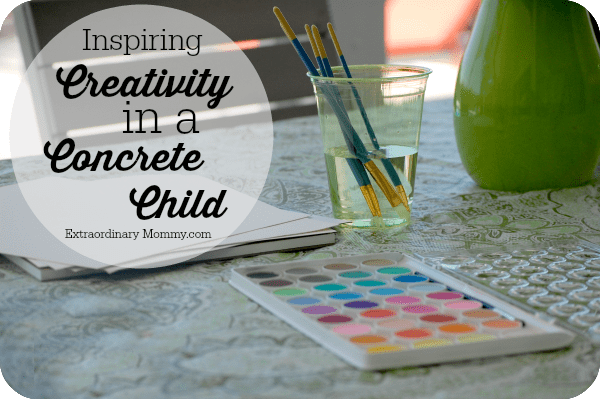Yesterday, I was elbow deep in dirty dishes. Feeling a little exasperated at the frequency with which I am constantly cleaning my home, I sighed in annoyance. I glanced up momentarily and caught a glimpse of my six year old tearing through the house dressed in full Ninja garb. Moving in obvious stealth mode toward his brother’s room, I could not suppress a smile.
I absolutely adore it when my children play dress up.
I find few things cuter or more endearing than a child in costume, fully consumed in a make believe world. I was that child, constantly flitting through the stories inside my head as I faced great adventures. I get that child, and my heart swoons just a little whenever I see him lost in imagination.
Not every child is bent this way, though. My daughter is 100% concrete. She is not given to imaginative fancy, and her brand of child’s play will almost always be centered around real life situations. She is so concrete that a reading tutor told us that she would likely be much more drawn to non-fiction books than fiction books.
“She doesn’t see word pictures in her head,” were the tutor’s exact words.
It’s taken me some time to get used to this. I struggle to identify with her brand of play because it is so different from that which I conducted as a child. In fact, her idea of a good time is to go do pull ups in the garage, or back flips off the couch.
So weird…
She’s athletic and energetic, and she generally has better things to do with her time than to engage in child’s play. This is baffling to me, but I also deeply admire her for it. She possesses a discipline that most children her age don’t understand.
That said, I do believe there is something magical about engaging a child creatively. Even my concrete child can be creative – she just needs someone to draw it out of her.
Art has been key in helping us inspire a little creativity. When she wonders what to draw, I ask her to imagine the craziest world she can think of and create that. At first, the best she could come up with was adding a few squiggly lines on her landscape photo and calling them “twisty flowers.” Eventually, though, I convinced her that it was okay to color the sky purple, the grass blue, and make a “chocolate” river with a brown crayon. It’s not her first inclination to change things up, but she’s more willing to give it a try now.
Another key to inspiring creativity in a concrete child is reading good books. Read books that invite your mind into a new world. One of our favorite books as a family (which was also my favorite book as a child) is The Last of the Really Great Wangdoodles by Julie Andrews Edwards. (Yes, Mary Poppins herself). Never has a book quite awoken my imagination, or the imaginations of my children, as this one.
Really, any of the classics will work, but for the concrete child, a book that centers more on real children facing fanciful situations is preferable to tapping into creativity.
Finally, play with your concrete child. Some kids just need to be taught how to use their imaginations. They need to hear someone make up funny voices, create unrealistic and daring scenarios, and to give them the freedom to expand their minds beyond the here and now.
For those of you who, like me, are raising a child with a propensity to live in a concrete world – I encourage you to prod a little creativity into her imagination. Don’t try to change her natural bent, by any means. You simply want to enhance it with a little fun. This will give her the tools she needs as she moves forward in life to really expand and grow as an individual.
What about you? How do you help your concrete child expand and grow creatively?


Leave a Reply